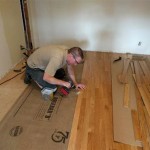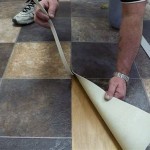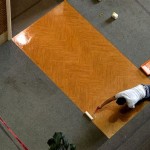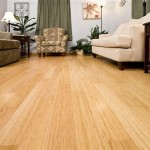Best Flooring Options for an Outside Patio
Choosing the appropriate flooring for an outdoor patio requires careful consideration of various factors, including climate, usage, budget, and aesthetic preferences. The ideal flooring material should be durable, weather-resistant, slip-resistant, and visually appealing, complementing the overall design of the outdoor space and the surrounding landscape. This article examines several popular flooring options for patios, outlining their key features, advantages, and disadvantages to aid in making an informed decision.
Factors to Consider When Selecting Patio Flooring
Before delving into specific materials, several essential considerations should influence the selection process. These factors will ensure that the chosen flooring is suitable for the intended purpose and environmental conditions.
Climate: The prevailing climate significantly impacts the longevity and performance of patio flooring. In regions with frequent freezing and thawing cycles, materials that are prone to cracking or water damage should be avoided. Areas with high humidity may necessitate flooring options resistant to mold and mildew growth. Similarly, intense sunlight can cause some materials to fade or become excessively hot underfoot.
Usage: The anticipated level of foot traffic and activities on the patio should guide the choice of flooring. High-traffic areas, such as those near entrances or grilling stations, require materials that can withstand abrasion and staining. If the patio will be used for dining, consider flooring that is easy to clean and maintain. For recreational spaces, slip-resistant surfaces are paramount for safety.
Budget: The cost of patio flooring can vary widely depending on the material, installation complexity, and geographical location. It is important to establish a realistic budget that encompasses both the material cost and the cost of professional installation, if required. Consider the long-term value of the flooring, as some initially expensive options may offer superior durability and lower maintenance costs over time, ultimately proving more cost-effective.
Aesthetics: The visual appeal of the patio flooring should harmonize with the surrounding landscape and the architectural style of the house. Consider the color, texture, and pattern of the flooring and how it complements the existing features of the outdoor space. Samples of different materials should be evaluated under natural light to assess their appearance at different times of the day.
Maintenance: The amount of effort required to maintain the patio flooring is another important consideration. Some materials, such as natural stone, may require periodic sealing to protect against staining and water damage. Other materials, such as composite decking, may require minimal maintenance beyond occasional cleaning. Choose a flooring option that aligns with the desired level of upkeep.
Common Patio Flooring Materials and Their Characteristics
Several materials are commonly used for patio flooring, each with its unique properties and suitability for different applications. The following sections describe some of the most popular options, along with their advantages and disadvantages.
Concrete: Concrete is a versatile and durable material that can be customized to achieve a wide range of aesthetic effects. It can be poured in place, precast into pavers, or stamped to mimic the appearance of natural stone. Concrete is relatively inexpensive and easy to maintain, requiring only occasional cleaning and sealing. However, concrete can be prone to cracking, especially in regions with freeze-thaw cycles. It can also become hot in direct sunlight.
Brick: Brick is a classic and timeless material that adds warmth and character to outdoor spaces. It is durable, weather-resistant, and relatively easy to install. Brick pavers are available in a variety of colors, sizes, and textures, allowing for a wide range of design possibilities. However, brick can be more expensive than concrete, and it may require periodic sealing to protect against staining. It can also be slippery when wet.
Stone: Natural stone, such as flagstone, slate, and limestone, offers a luxurious and durable flooring option for patios. Stone is naturally slip-resistant and can withstand harsh weather conditions. It is available in a wide range of colors, textures, and sizes, offering a unique and organic aesthetic. However, natural stone can be more expensive than other flooring options, and it may require professional installation. It also requires periodic sealing to protect against staining and water damage. The cost of stone depends heavily on the rarity and transportation cost.
Tile: Outdoor-rated tile, such as porcelain or ceramic, provides a durable and versatile flooring option for patios. Tile is available in a wide range of colors, patterns, and sizes, allowing for a high degree of customization. It is relatively easy to clean and maintain and can be slip-resistant when properly textured. However, tile can be more expensive than concrete or brick, and it requires a solid and level subbase for proper installation. It can also be prone to cracking in regions with freeze-thaw cycles if not properly installed with appropriate grout and substrate.
Wood: Wood decking is a popular choice for patios, offering a warm and inviting aesthetic. It is relatively easy to install and can be stained or painted to match the desired color scheme. However, wood requires regular maintenance, including cleaning, staining, and sealing, to protect against rot, decay, and insect infestation. Certain types of wood, like cedar or redwood, are naturally more resistant to these issues. Wood can also be slippery when wet.
Composite Decking: Composite decking is a low-maintenance alternative to wood decking, made from a blend of wood fibers and recycled plastic. It is resistant to rot, decay, and insect infestation, and it requires minimal cleaning and maintenance. Composite decking is available in a variety of colors and textures, mimicking the appearance of natural wood. However, composite decking can be more expensive than wood, and it may not have the same natural aesthetic appeal.
Gravel: Gravel is an inexpensive and permeable flooring option for patios, allowing rainwater to drain easily. It is available in a variety of colors and sizes, offering a natural and rustic aesthetic. Gravel is relatively easy to install, requiring only a compacted base and edging to contain the material. However, gravel can be difficult to walk on, especially with bare feet, and it may require periodic raking to maintain a smooth surface. Weeds can also be a problem with gravel patios.
Durability and Maintenance Considerations for Patio Flooring
The long-term performance and aesthetic appeal of patio flooring depend on its durability and the level of maintenance it receives. Selecting a material that is well-suited to the local climate and usage patterns is crucial for ensuring its longevity.
Weather Resistance: Patio flooring should be able to withstand the elements, including rain, snow, sun, and temperature fluctuations. Materials that are prone to cracking, warping, or fading should be avoided in harsh climates. Consider using sealants or protective coatings to enhance the weather resistance of the flooring.
Slip Resistance: Safety is a primary concern for patio flooring, especially in areas that are frequently wet or exposed to moisture. Choose materials with a textured surface or incorporate slip-resistant additives to improve traction. Consider using mats or rugs in areas where slipping is a potential hazard.
Stain Resistance: Patio flooring should be resistant to staining from spills, dirt, and outdoor debris. Choose materials that are easy to clean and maintain or consider using stain-resistant sealants. Regularly clean the patio flooring to prevent the buildup of dirt and grime.
Maintenance Requirements: The level of maintenance required for patio flooring should be factored into the selection process. Some materials, such as concrete and brick, may require periodic sealing to protect against staining and water damage. Wood decking requires regular cleaning, staining, and sealing to prevent rot and decay. Composite decking is a low-maintenance option that requires minimal cleaning. Gravel patios may require periodic raking and weed control.
Installation Considerations: Proper installation is essential for the long-term performance of patio flooring. Follow the manufacturer's instructions carefully and ensure that the subbase is properly prepared. Consider hiring a professional contractor for complex installations or for materials that require specialized tools or techniques. Poor installation can lead to premature failure of the flooring and costly repairs.
Selecting the right flooring for an outdoor patio involves a careful assessment of various factors, including climate, usage, budget, aesthetics, and maintenance. By considering these factors and evaluating the properties of different flooring materials, it is possible to choose an option that is durable, weather-resistant, slip-resistant, and visually appealing, creating a functional and enjoyable outdoor space.

Which Tiles Are Best For Outdoor Flooring Walls And Floors

The 5 Best And Worst Flooring For An Outdoor Patio

11 Fantastic Patio Flooring Ideas To Transform Your Home

Best Outdoor Flooring For Patios Or Terraces Rubi Blog Usa

5 Best Outdoor Tile Ideas For Your Patio

The Complete Guide To Choosing Best Outdoor Tile

11 Fantastic Patio Flooring Ideas To Transform Your Home

Outdoor Patio Tiles 10 Best Ideas The Family Handyman

Outdoor Patio Flooring A Long Lasting Solution Eco Grind

Best Outdoor Flooring For Patios Terraces And Swimming Pool
Related Posts








